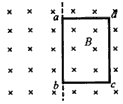I saw a television advertisement recently for a new product called an air sanitizer. A woman stood in her kitchen, spraying the empty space in front of her as though using Mace against an imaginary assailant. She appeared very determined. Where others are satisfied with antibacterial-laced sponges, dish soaps, hand sanitizers and telephone wipes, here was a woman who sought to sterilize the air itself.
As a casual student of microbiology, I find it hard to escape the absurdity here. This woman is, like any human being, home to hundreds of trillions of bacteria. Bacteria make up a solid third, by weight, of the contents of her intestines. If you were to sneak into her bathroom while she was showering—and based on my general impression of this woman from the advertisement, I don’t recommend this—and secret away a teaspoon of the water at her feet, you would find some 820 billion bacteria. Bacteria are unavoidably, inevitably—and, usually, utterly benignly—a part of our world.
The fantasy of a germ-free home is not only absurd, but it is also largely pointless. Unless you share your home with someone very old, very young (under 6 months) or very ill, the few hundred bacteria on a countertop, doorknob or spoon pose no threat. The bacteria that cause food poisoning, the only significant rational bacterial worry in the average home, need to multiply into the thousands or millions before they can overwhelm your immune system and cause symptoms.
The only way common food poisoning bacteria can manage this is to spend four or five hours reproducing at room temperature in something moist that you then eat. If you are worried about food poisoning, the best defense is the refrigerator. If you don’t make a habit of eating perishable food that has been left out too long, don’t worry about bacteria.
Viruses are slightly different. You need only pick up a few virus particles to infect yourself with a cold or flu, and virus particles can survive on surfaces for days. So disinfecting the surfaces in the home should, in theory, reduce the chances of picking up a bug.
In practice, the issue is less clear. A study by Dr. Elaine Larson at the Columbia School of Nursing called into question the usefulness of antibacterial products for the home. In New York, 224 households, each with at least one preschooler, were randomly assigned to two groups. One group used antibacterial cleaning, laundry and hand-washing products. The other used ordinary products. For 48 weeks, the groups were monitored for seven symptoms of colds, flu and food poisoning—and found to be essentially the same. According to Dr. Gerba’ s research, an active adult touches an average of 300 surfaces every 30 minutes. You cannot win at this, You will become obsessive-compulsive. Just wash your hands with soap and water a few times a day, and leave it at that.
We can infer from Paragraph 3 that ().
A. healthy people should live separately from unhealthy members of the family
B. a germ-free home is not only possible, but significant
C. unless you live with the vulnerable, it is pointless to sterilize the air
D. our immune systems are too weak to fight against the food poisoning bacteria


